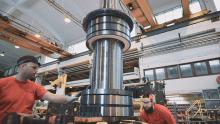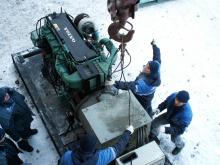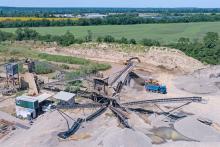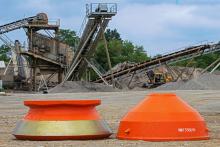
When crushers and screens are tirelessly working far from your home base, everything can be going smoothly – until it isn’t. Applications can be demanding and when a component eventually fails, you need to be sure replacement parts perform as they should.
Maiju Niiranen, product manager, stationary equipment spares at Metso says that, although spare and wear parts may look the same from the outside, they may be very different in terms of quality and materials.
“The results of using an incorrect part that does not perform can be very costly – equipment can be damaged; the part’s lifetime may be considerably shortened, or the equipment could fail catastrophically putting the safety of workers at risk,” she adds.
Metso’s Nordberg C-series jaw crushers have been workhorses in quarries around the world for decades. When it comes to critical components for the crusher such as the pitman assemblies or frame parts, using components designed for the machine is an important step to caring for your producing equipment.
Niiranen says factors that affect the performance and reliability of components can be difficult to see, such as the raw materials used, the casting technology, pouring plan, the exact tolerances, and contact-surface quality. There are also hours and hours of engineering, quality assurances and testing methodologies that take place before the manufacturing process of the units and spare and wear parts even starts.
She adds: “With Nordberg HP crushers, the case is similar. For instance, the thrust-bearing design is very delicate and if not lapped correctly, may result in improper contact and having a different pressure profile than it was designed for.
“To the human eye, parts may look like the right fit but an important question to ask is whether it has been made to the right tolerances? Fractions of a millimetre can make the difference between a correct and an incorrect fit, and between optimal machine performance and equipment failing due to a wrongly-sized component. OEM parts are designed for fit and function and to bear the operating load at its design parameters, helping the crusher to avoid seizure or early failure.”
Unplanned issues can easily result in significant lost production and costly repairs so ensuring that replacement parts are made exactly to the specified dimensions, and fit, is a big part of maintaining the performance of your crushers and other machines.
Niiranen says that Metso premium spare parts are built to ensure crusher availability, uninterrupted work, and a long service life – in addition to safety and sustainability.
“An often-overlooked factor is an OEM’s ongoing R&D work that can take the engineering to the next level, bringing benefits to older Metso equipment,” she adds. “Besides keeping it in original working order, premium spare parts can also enable a full upgrade – adding crusher availability and capabilities.”









